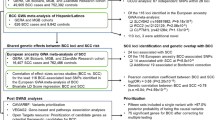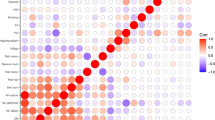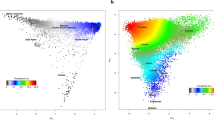Abstract
The factors that determine development of single and multiple primary cutaneous basal cell carcinomas (BCCs) are unclear. We describe a case-control study firstly, to examine the influence of allelism at the glutathione S-transferase GSTM1 and GSTT1 and cytochrome P450 CYP2D6 loci on susceptibility to these tumours and, secondly, to identify interactions between genotypes and relevant individual characteristics, such as skin type and gender. Frequency distributions for GSTM1 genotypes in cases and controls were not different, although the frequency of GSTM1 A/B was significantly lower (P = 0.048) in the multiple BCCs than in controls. We found no significant differences in the frequencies of GSTT1 and CYP2D6 genotypes in cases and controls. Interactions between genotypes were studied by comparing multinomial frequency distributions in mutually exclusive groups. These identified no differences between cases and controls for combinations of the putatively high risk GSTM1 null, GSTT1 null, CYP2D6 EM genotypes. Interactions between GSTM1 A/B and the CYP2D6 PM and GSTT1-positive genotypes were also not different. Frequency distributions of GSTM1 A/B with CYP2D6 EM in controls and multiple BCCs were significantly different (P = 0.033). The proportion of males in the multiple BCC group (61.3%) was greater than in controls (47.0%) and single BCC (52.2%), and the frequency of the combination GSTM1 null/male gender was significantly greater in patients with multiple tumours (P = 0.002). Frequency distributions of GSTM1 null/skin type 1 were also significantly different (P = 0.029) and the proportion of subjects who were GSTM1 null with skin type 1 was greater (P = 0.009) in the multiple BCC group. We examined the data for interactions between GSTM1 null/skin type 1/male gender by comparing frequency distributions of these factors in the single and multiple BCC groups. The distributions were almost significantly different (exact P = 0.051). No significant interactions between GSTT1 null or CYP2D6 EM and skin type 1 were identified. Comparisons of frequency distributions of smoking with the GSTM1 null, GSTT1 null and CYP2D6 EM genotypes identified no differences between patients with single and multiple tumours.
This is a preview of subscription content, access via your institution
Access options
Subscribe to this journal
Receive 24 print issues and online access
$259.00 per year
only $10.79 per issue
Buy this article
- Purchase on Springer Link
- Instant access to full article PDF
Prices may be subject to local taxes which are calculated during checkout
Similar content being viewed by others
Author information
Authors and Affiliations
Rights and permissions
About this article
Cite this article
Heagerty, A., Smith, A., English, J. et al. Susceptibility to multiple cutaneous basal cell carcinomas: significant interactions between glutathione S-transferase GSTM1 genotypes, skin type and male gender. Br J Cancer 73, 44–48 (1996). https://doi.org/10.1038/bjc.1996.8
Issue Date:
DOI: https://doi.org/10.1038/bjc.1996.8
This article is cited by
-
Effect of GSTM1 polymorphism on risks of basal cell carcinoma and squamous cell carcinoma: a meta-analysis
Tumor Biology (2013)
-
The response to cyclophosphamide in steroid-sensitive nephrotic syndrome is influenced by polymorphic expression of glutathion-S-transferases-M1 and -P1
Pediatric Nephrology (2005)



